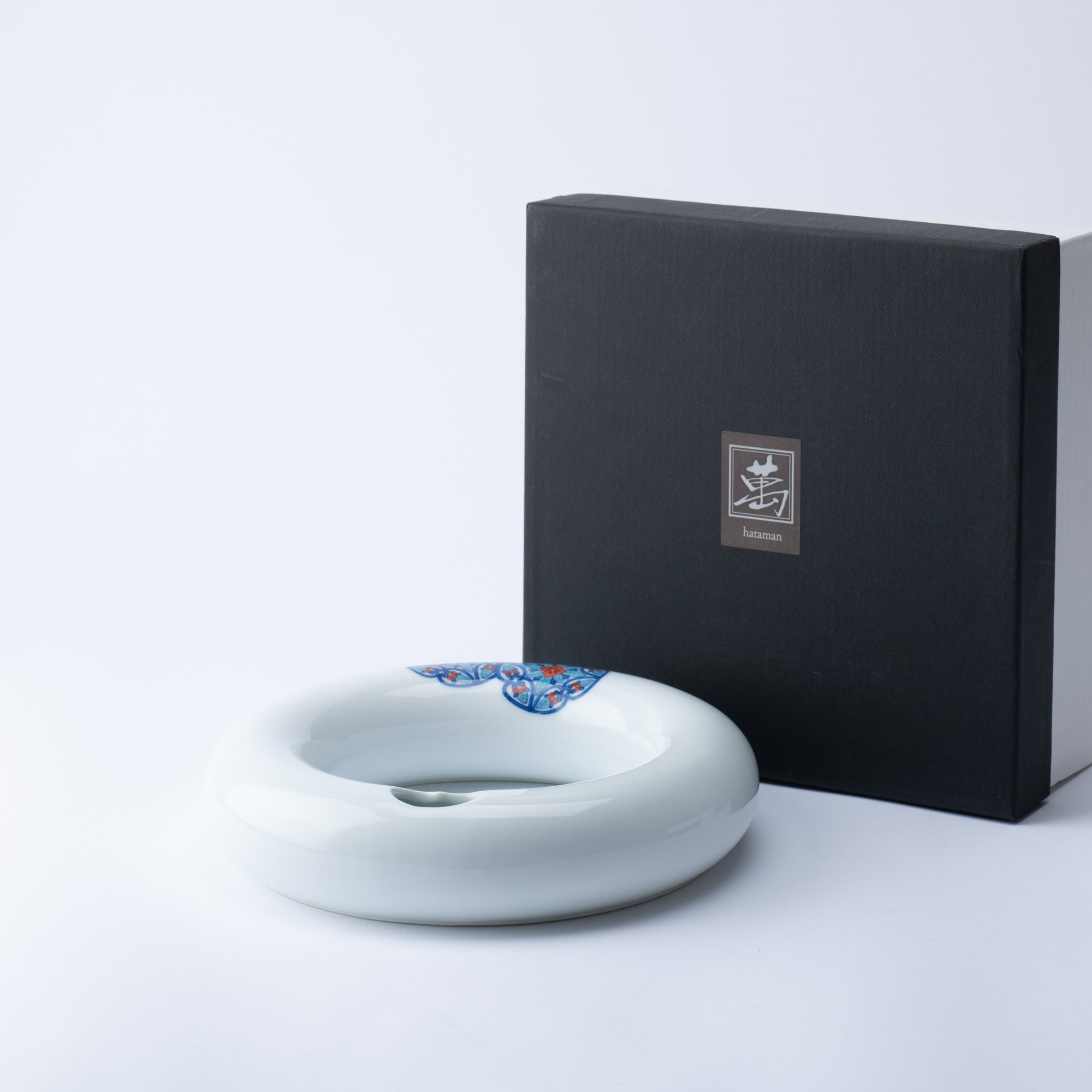
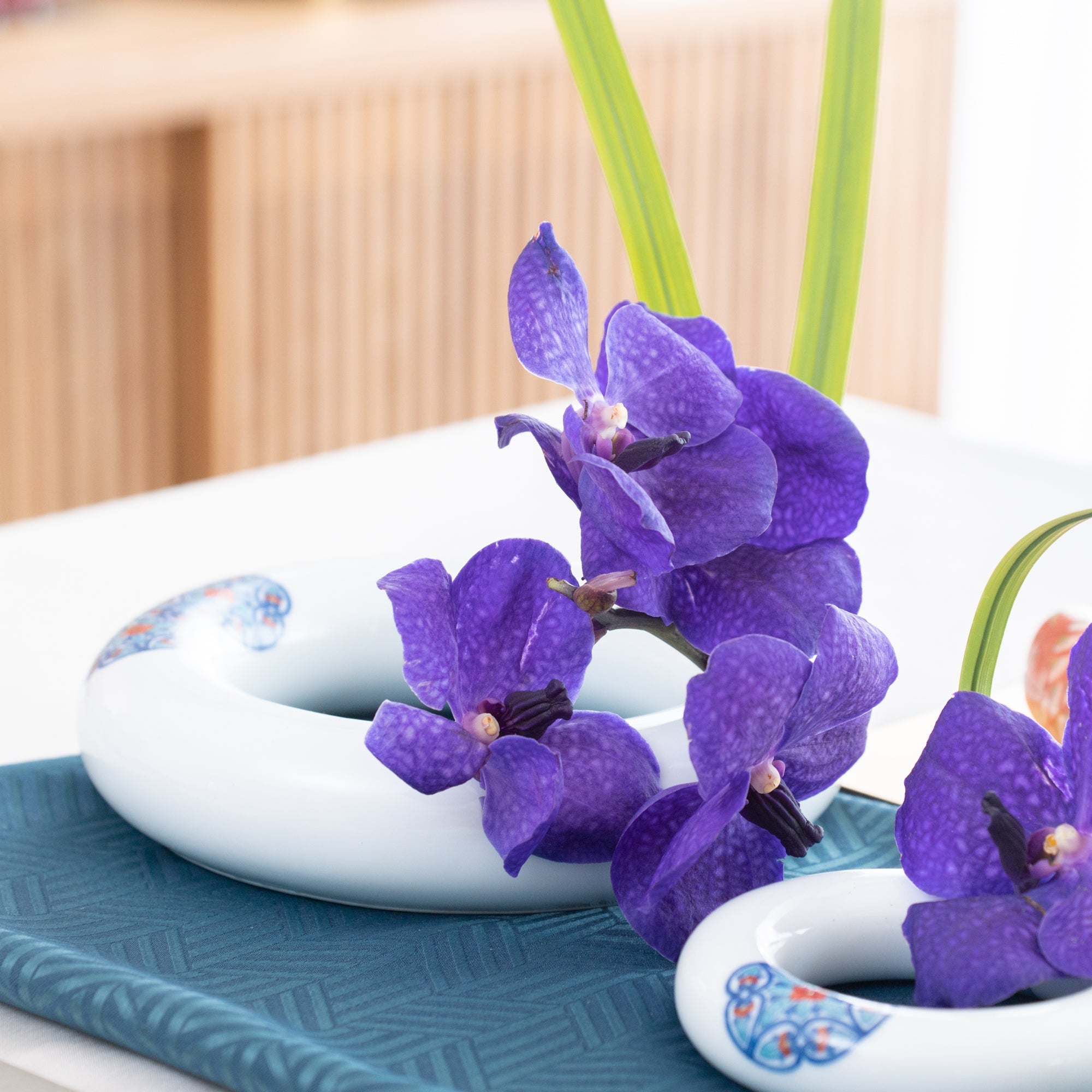
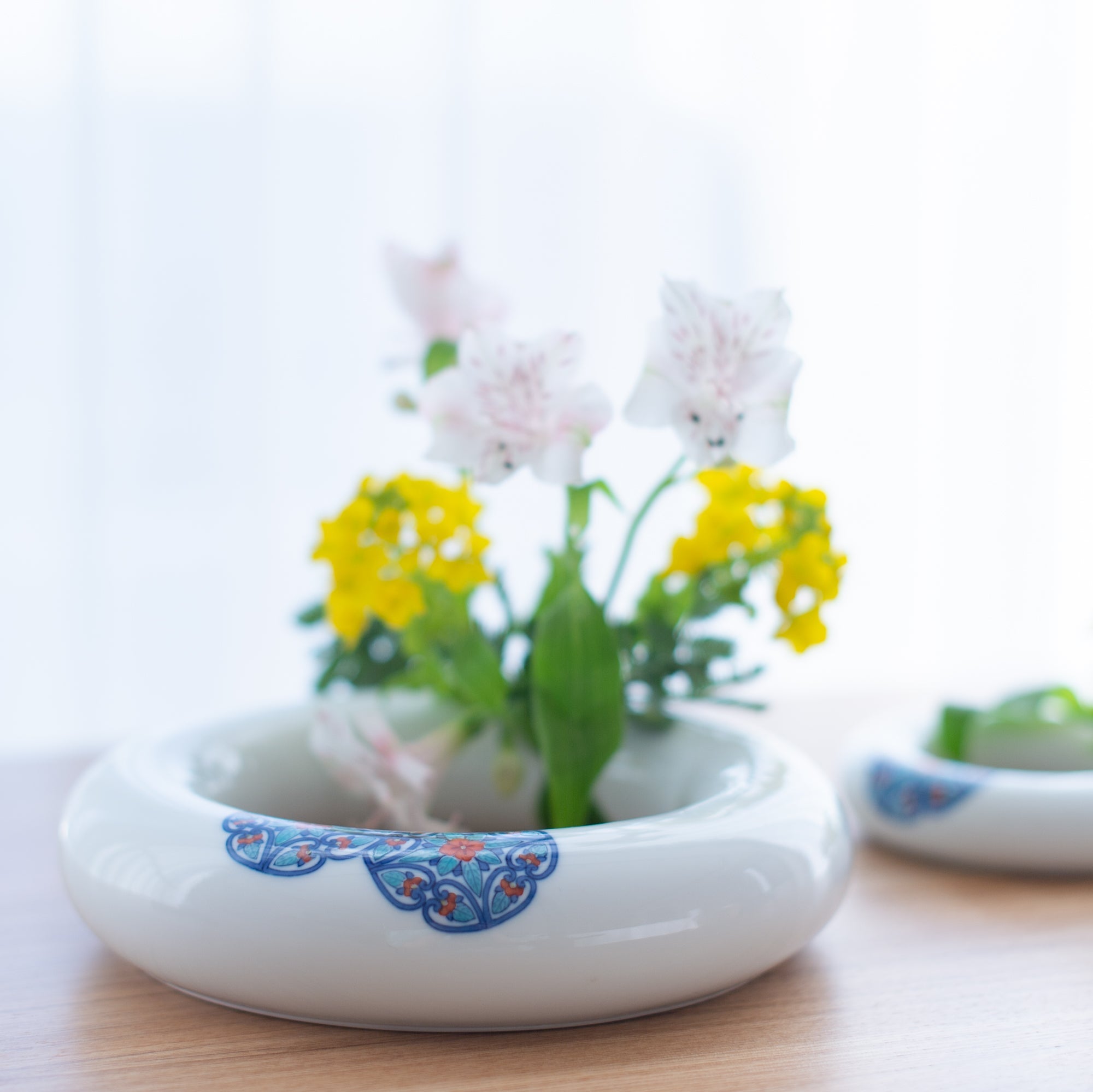
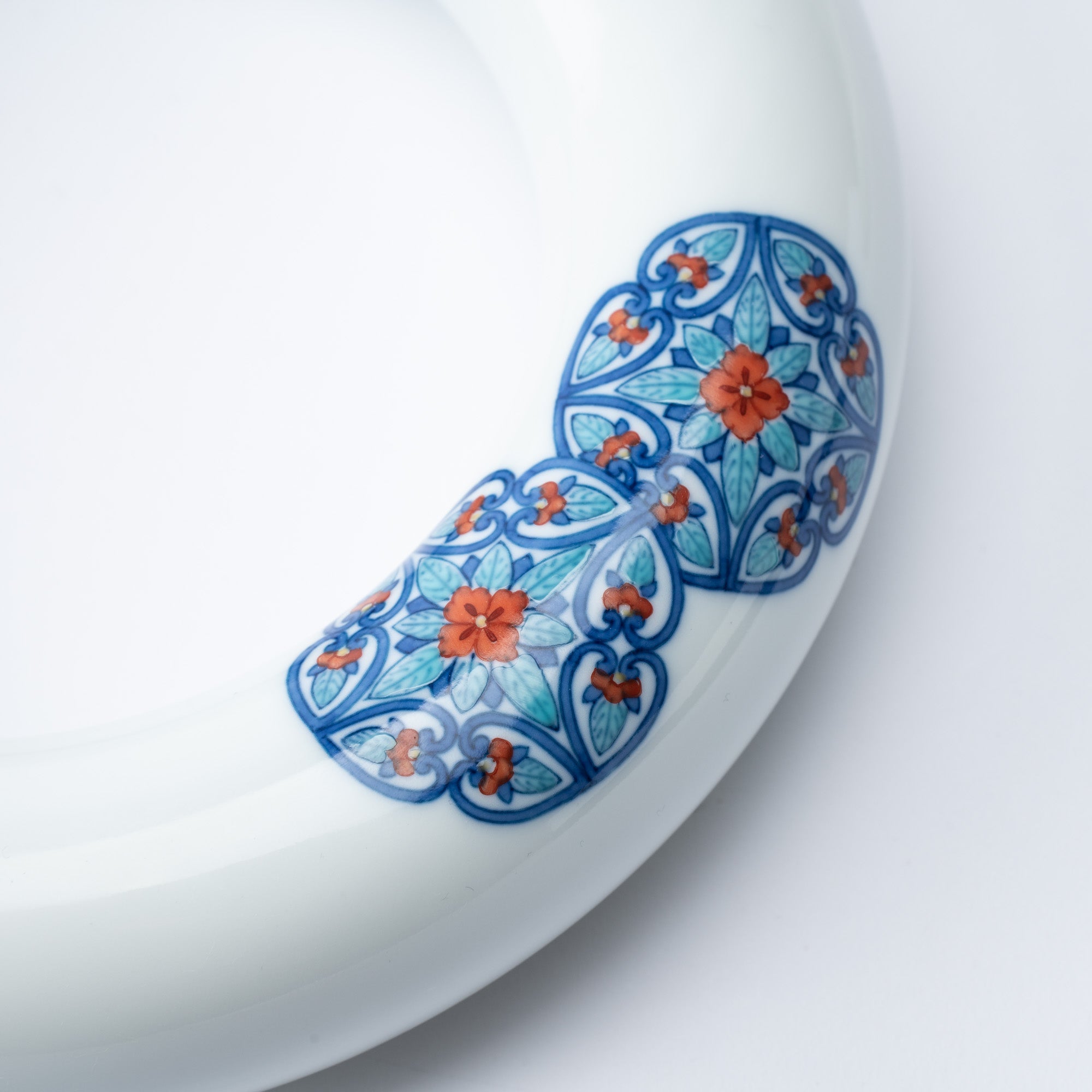
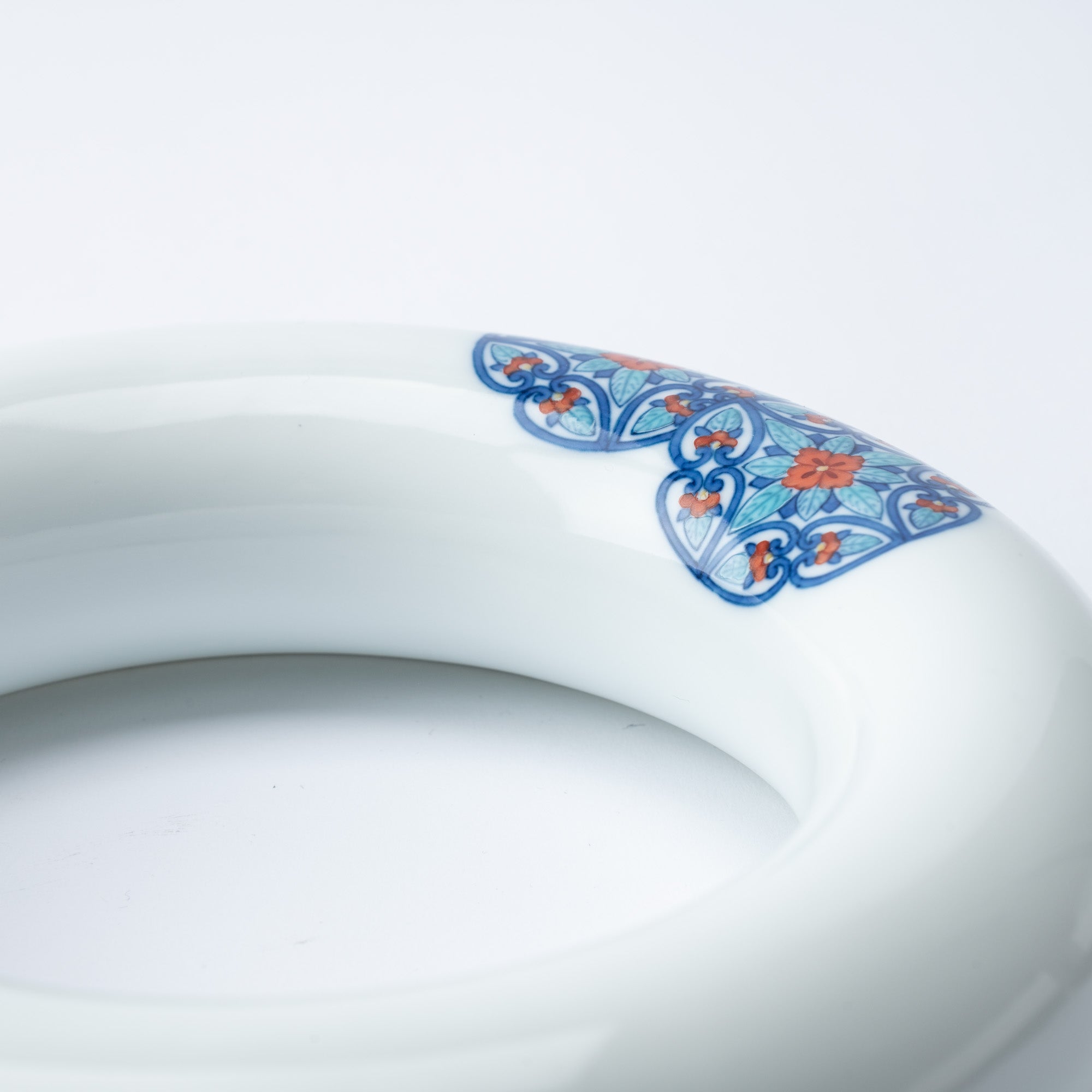
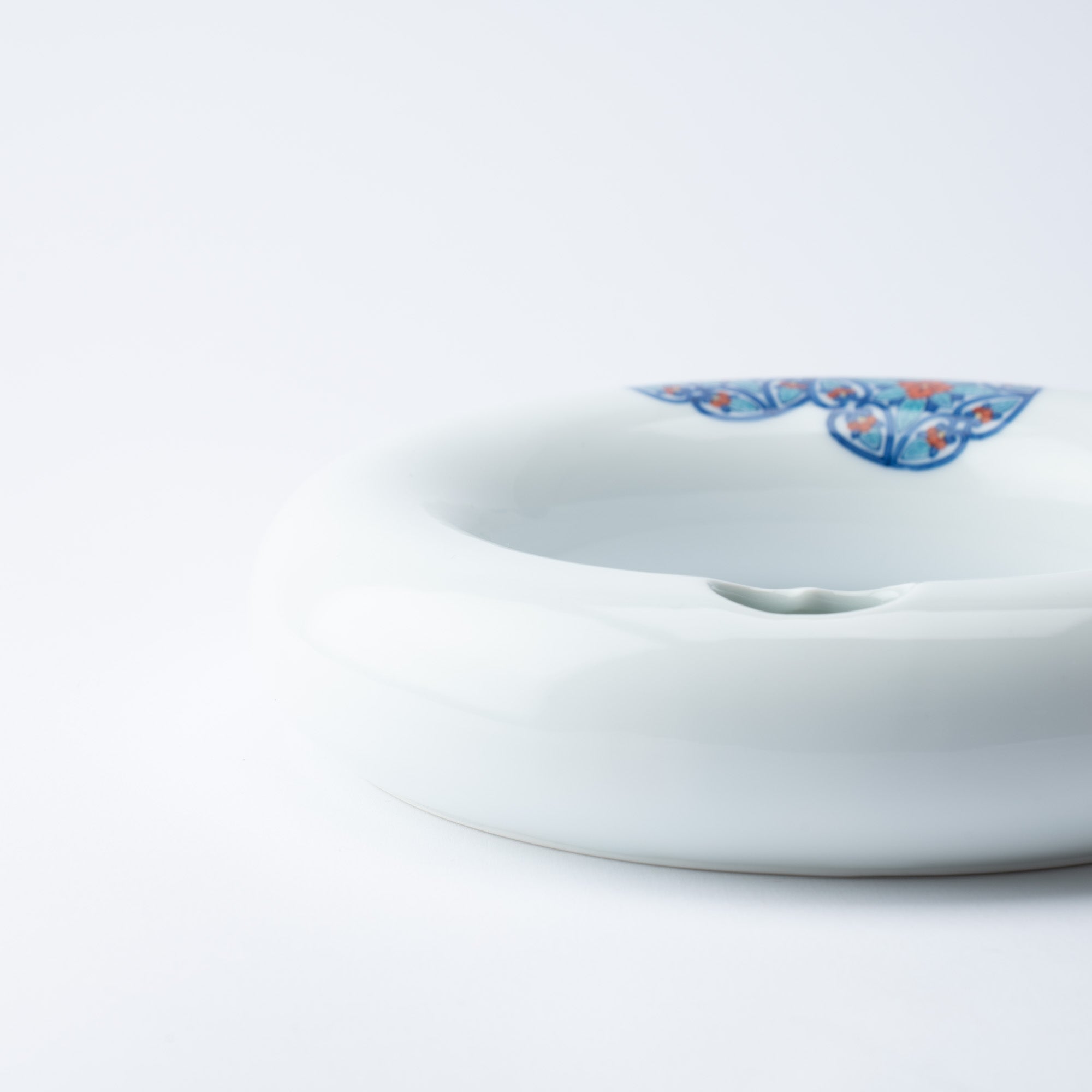
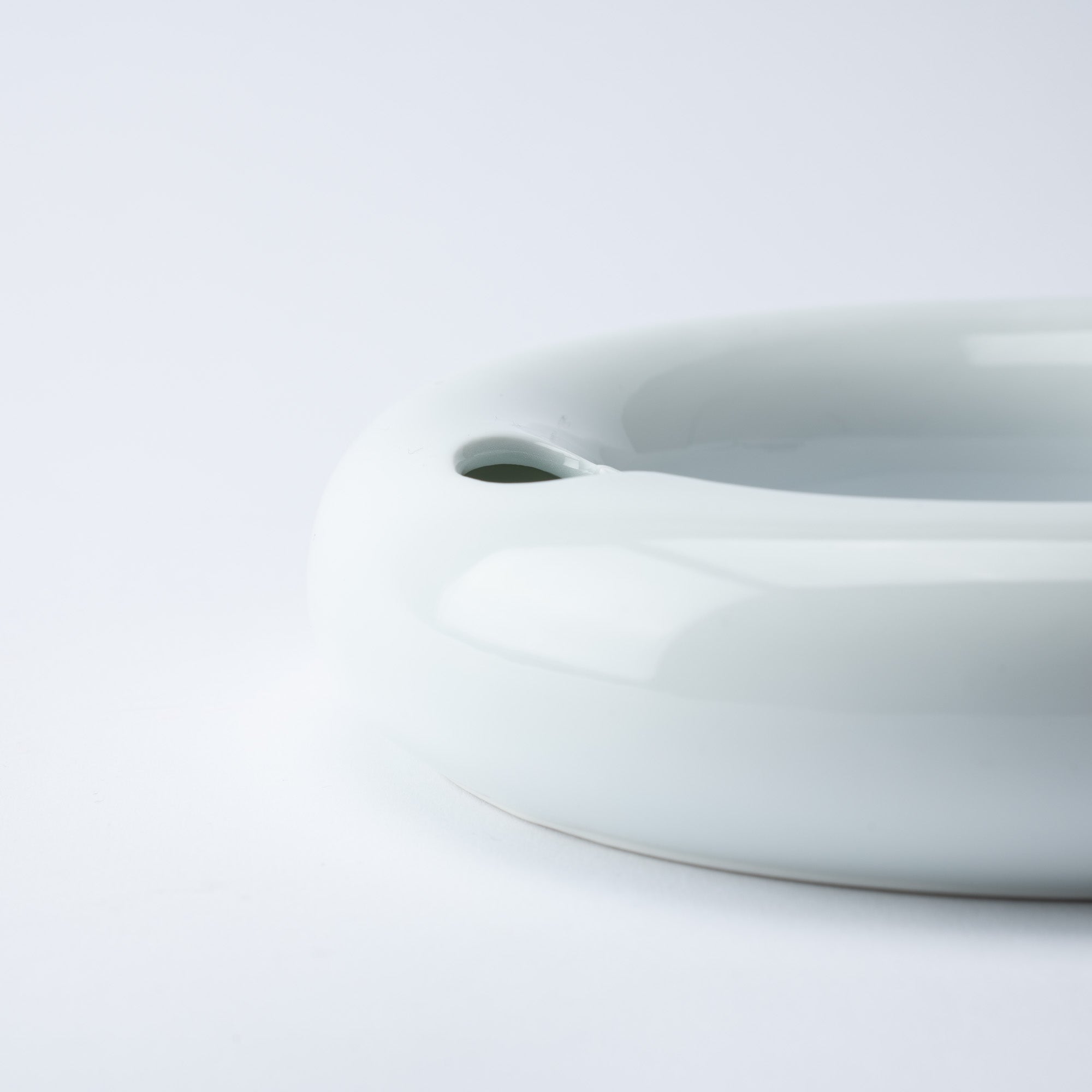
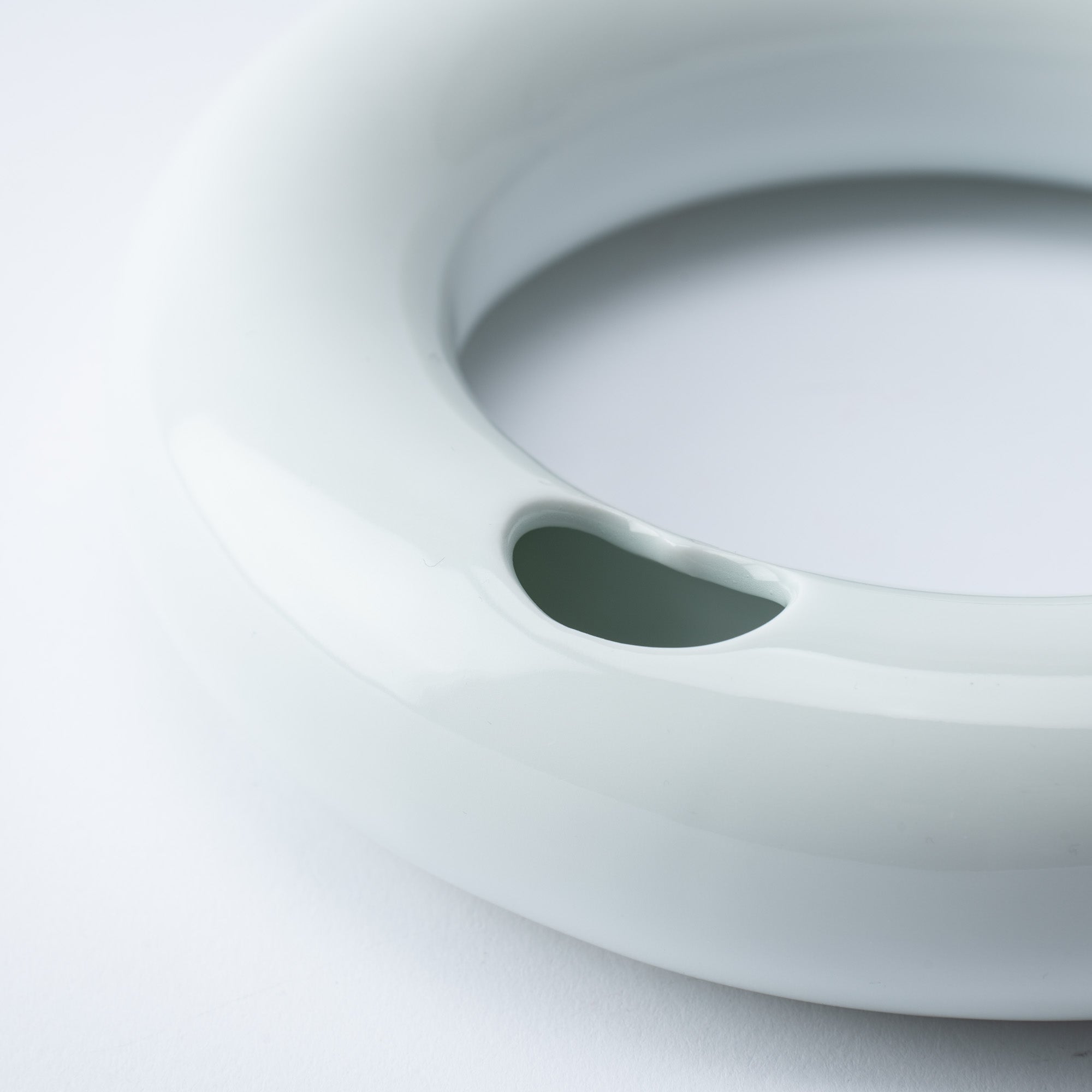
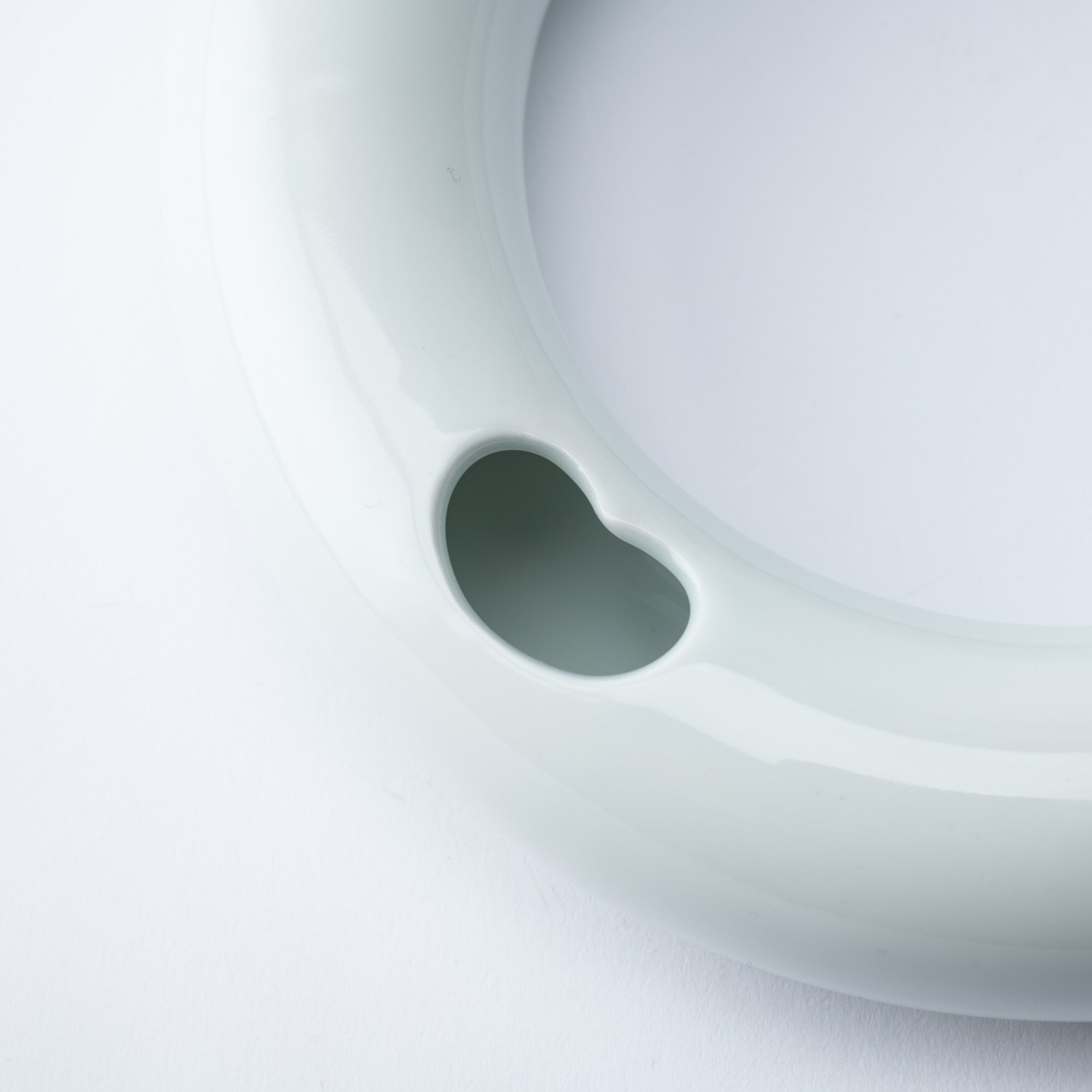
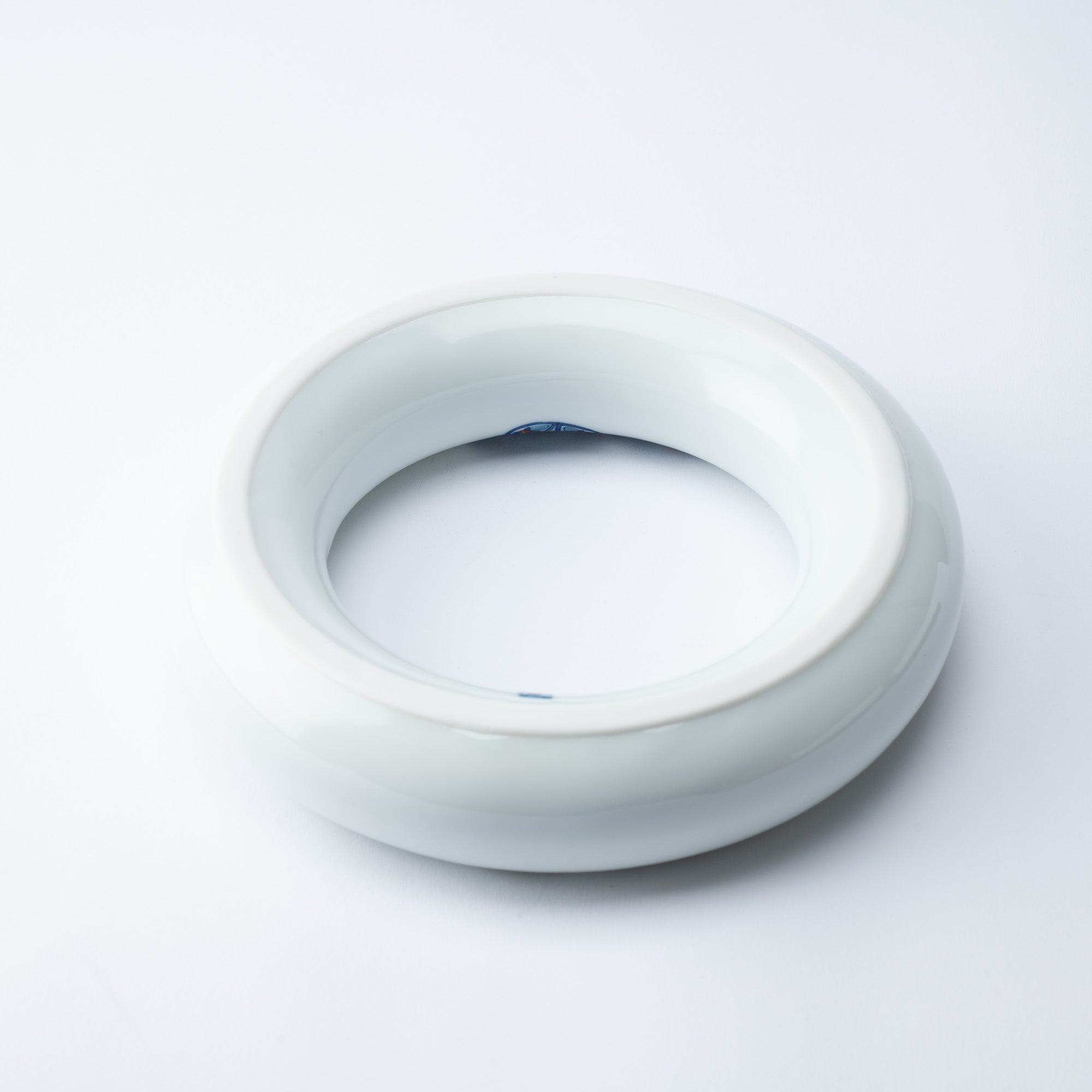
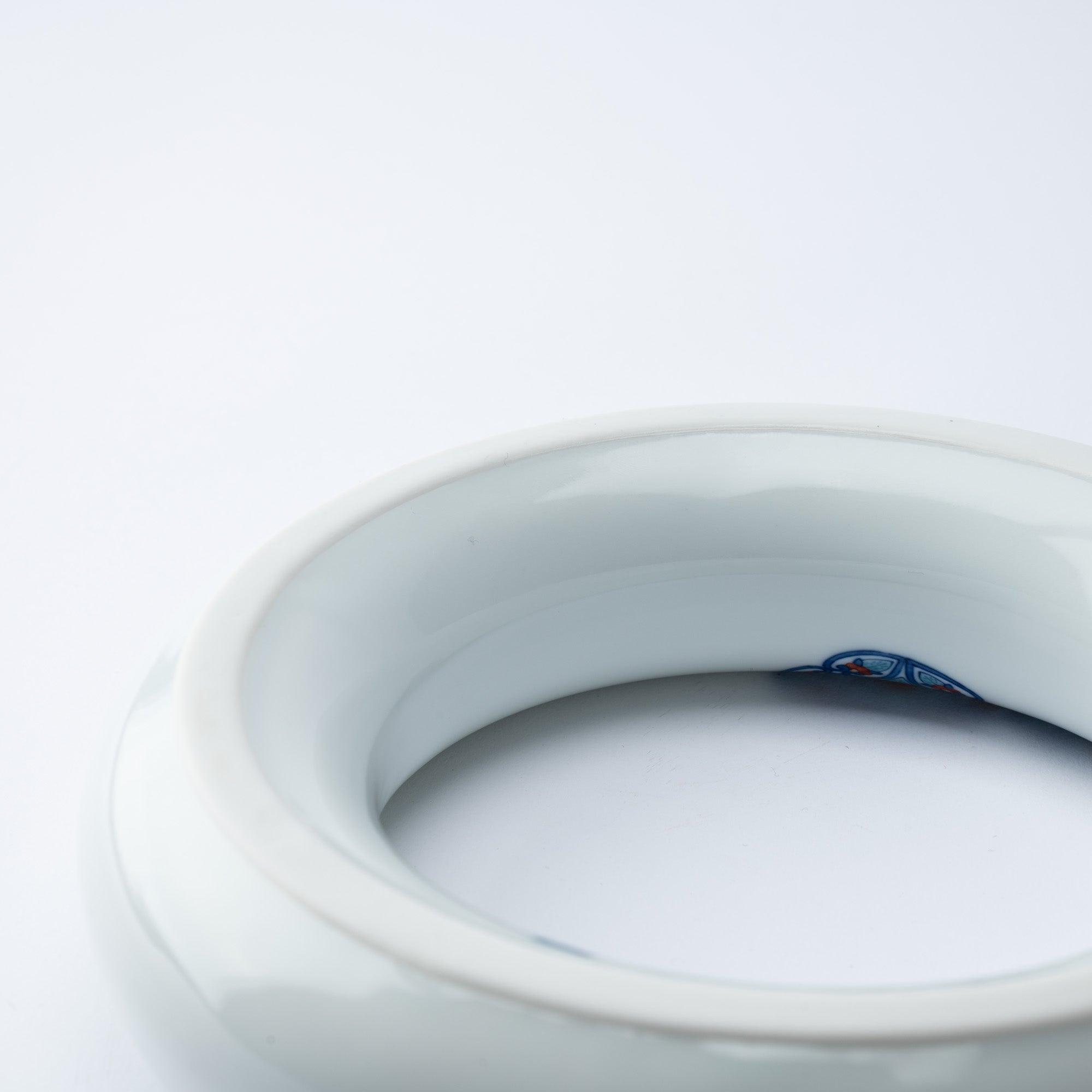
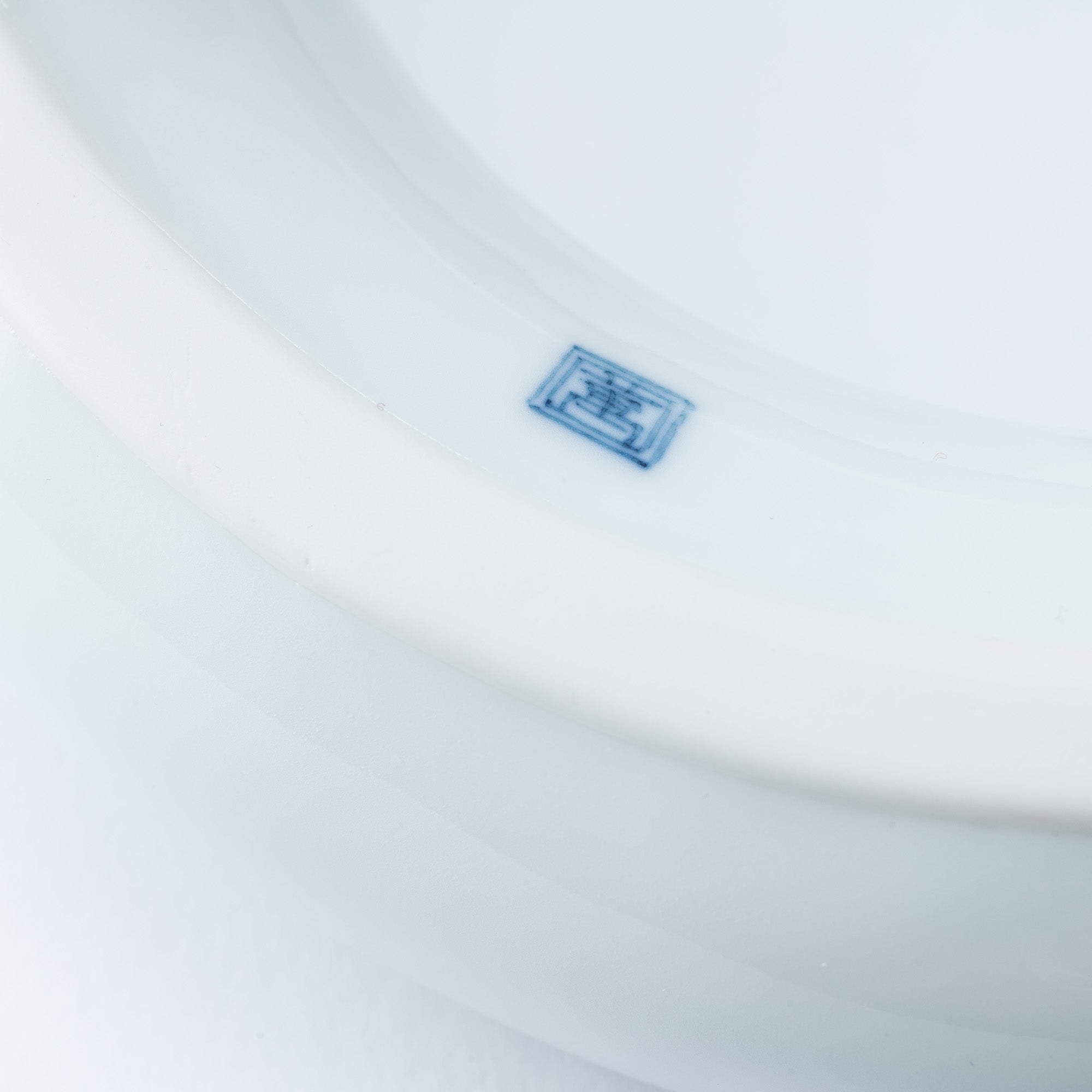
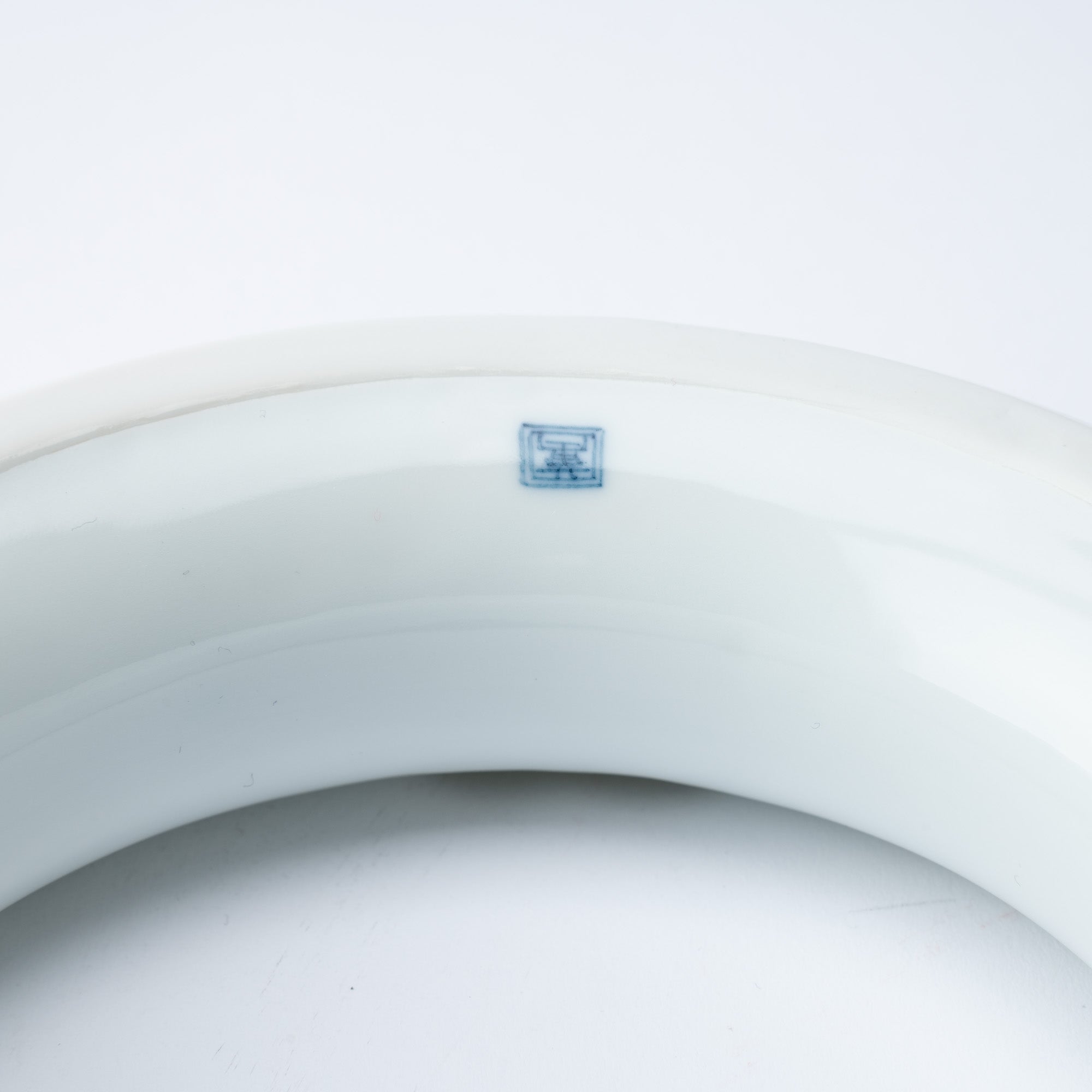
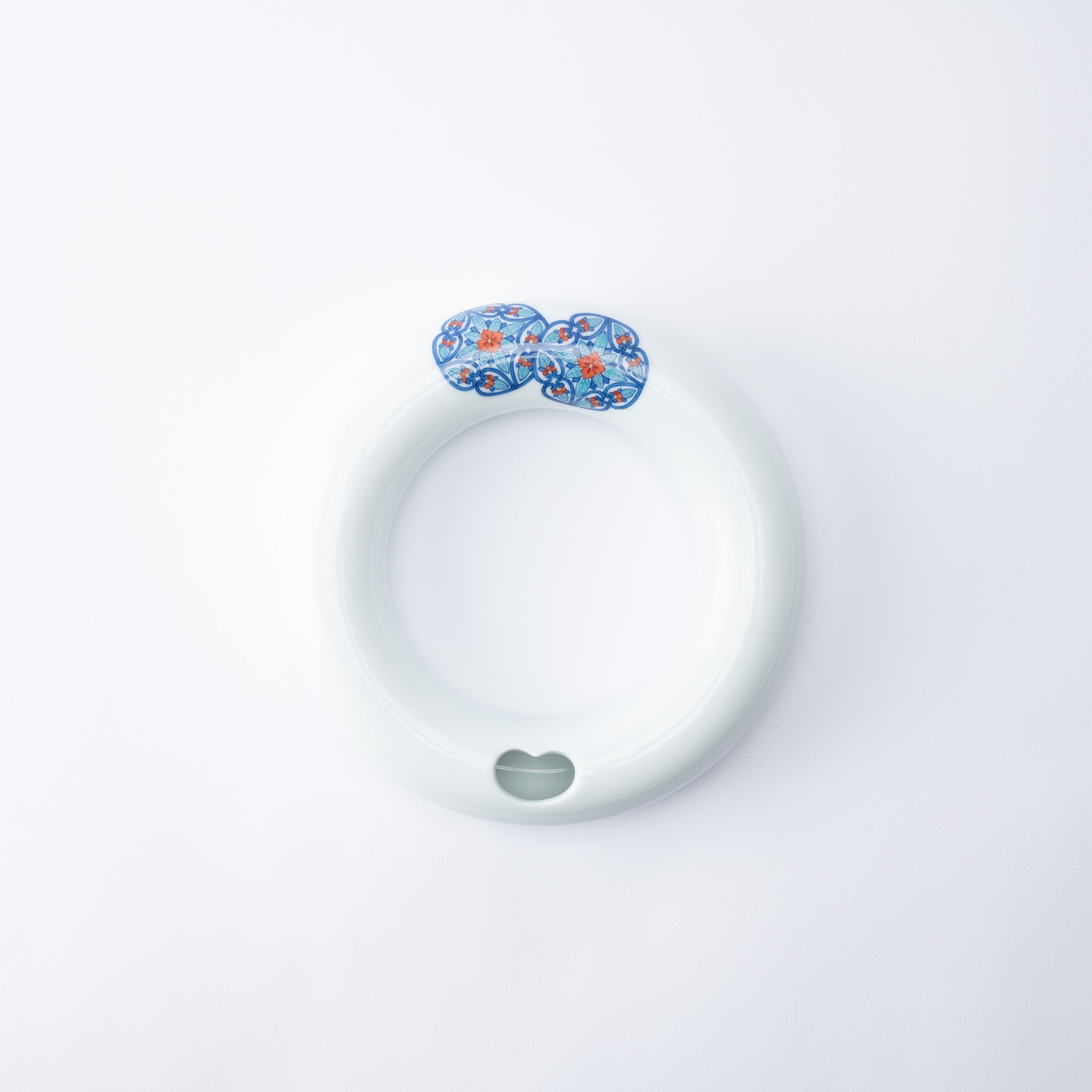
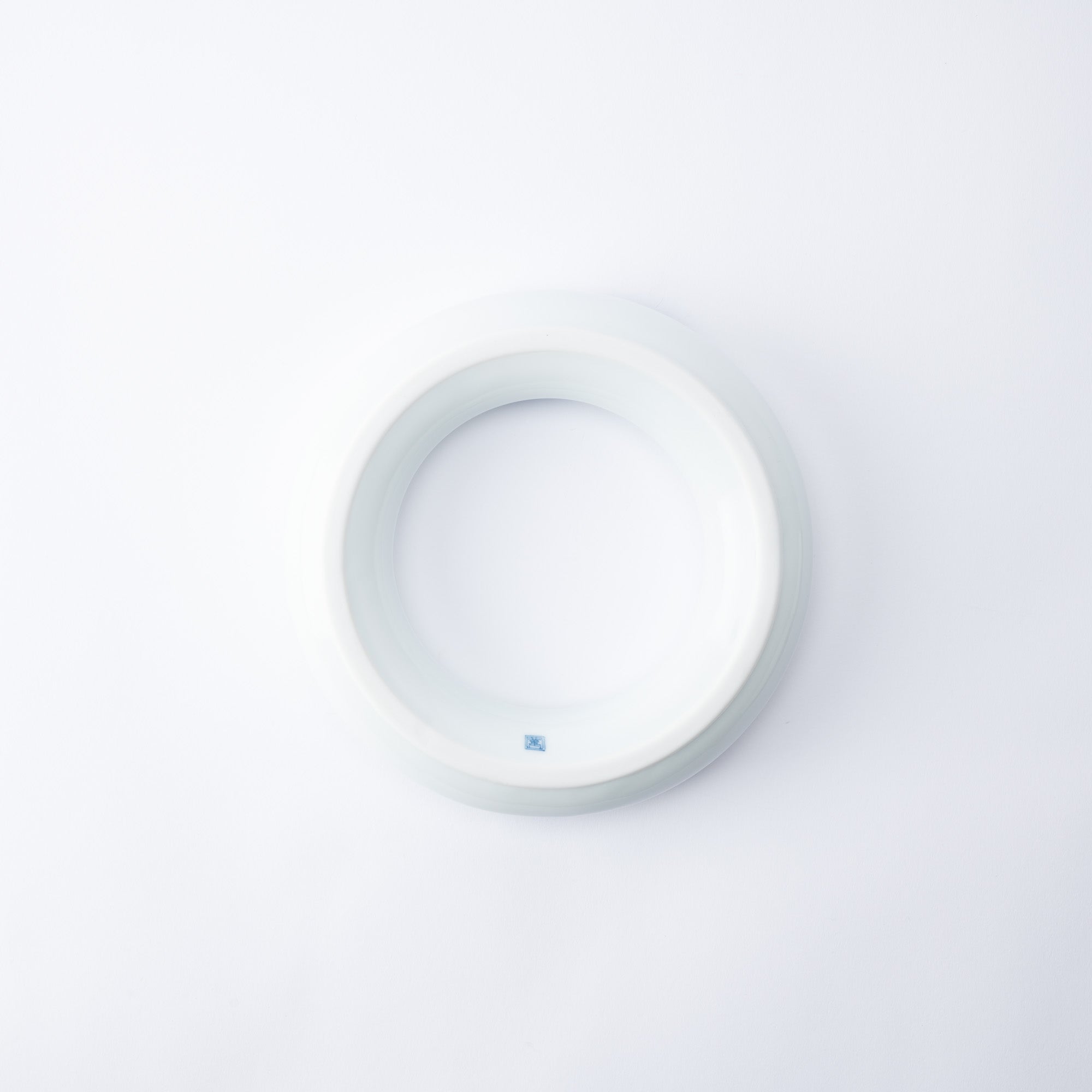
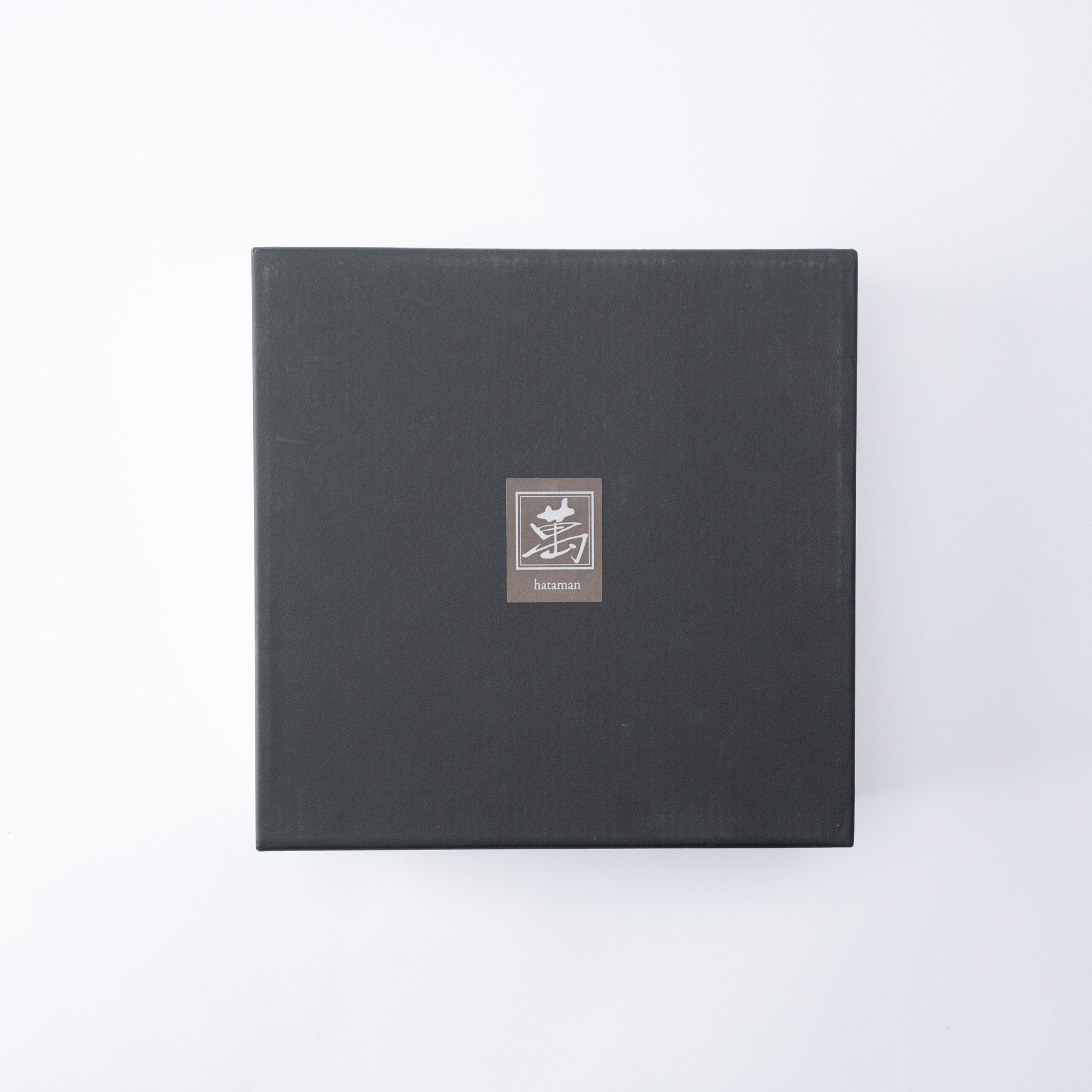
Nabeshima Kaleidoscope Ring Flower Vase L
Estimated Shipping Widget will be displayed here!
This ring-shaped vase showcases the iro-Nabeshima (colored Nabeshima) style with a kaleidoscope design, a traditional Nabeshima pattern.
This vase is perfect to showcase flowers and vines such as ivy or clematis. As shown in the photo, decorating a vanda flower with its large petals also looks stunning.
Alternatively, the size of this vase is suitable for arranging these beautiful blooms softly alongside greenery. Whether you opt for classic designs or something more unique, this vessel will add a touch of elegance to any space.
The style of iro-Nabeshima has traditional rules, consisting of one color for sometsuke (indigo blue) and three colors for akae (red, yellow, and green). After the outline is drawn in indigo blue gosu pigment, overglaze painting in red, kibi (yellow), and moe (green) is used to color in the design. Although it may seem that many colors are used, in fact, only three are applied—a hallmark of iro-Nabeshima—and its beauty is regarded as the pinnacle of Japanese porcelain.
DETAILS
| Quantity | 1 |
| Size |
D 19.5 cm (7.7 in) x H 4 cm (1.6 in) Size of opening: 2.8 cm (1.1 in) x 1.7 cm (0.7 in) |
| Material | Porcelain |
| Package Type | Paper box |
| Microwave | No |
| Dishwasher | No |
Maker / Brand / Series
Origin
Choose options
















Estimated Shipping Widget will be displayed here!
Japanese Flower Vase
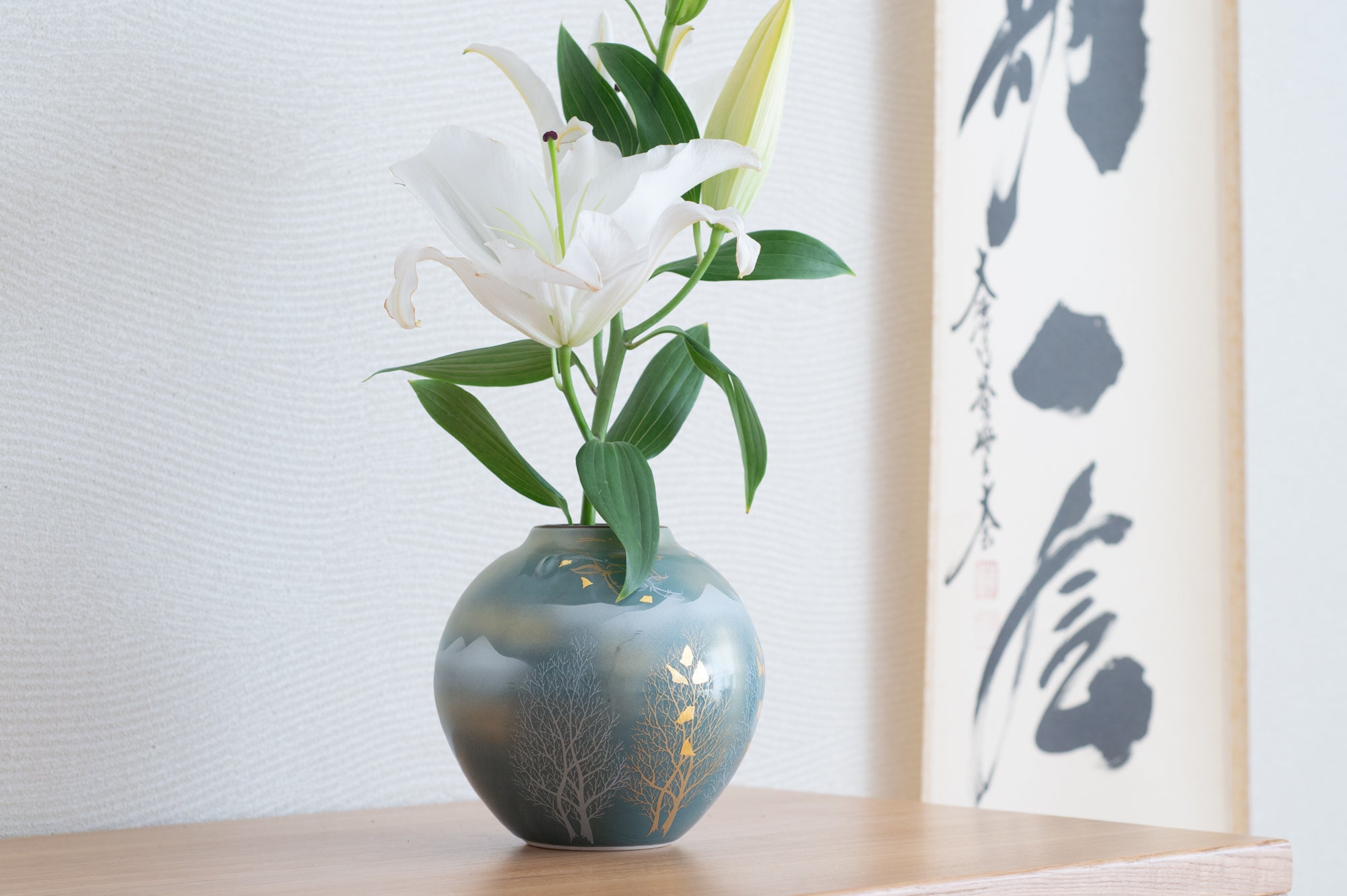
Beautiful Tradition Enjoyed with Imari Nabeshima Ware
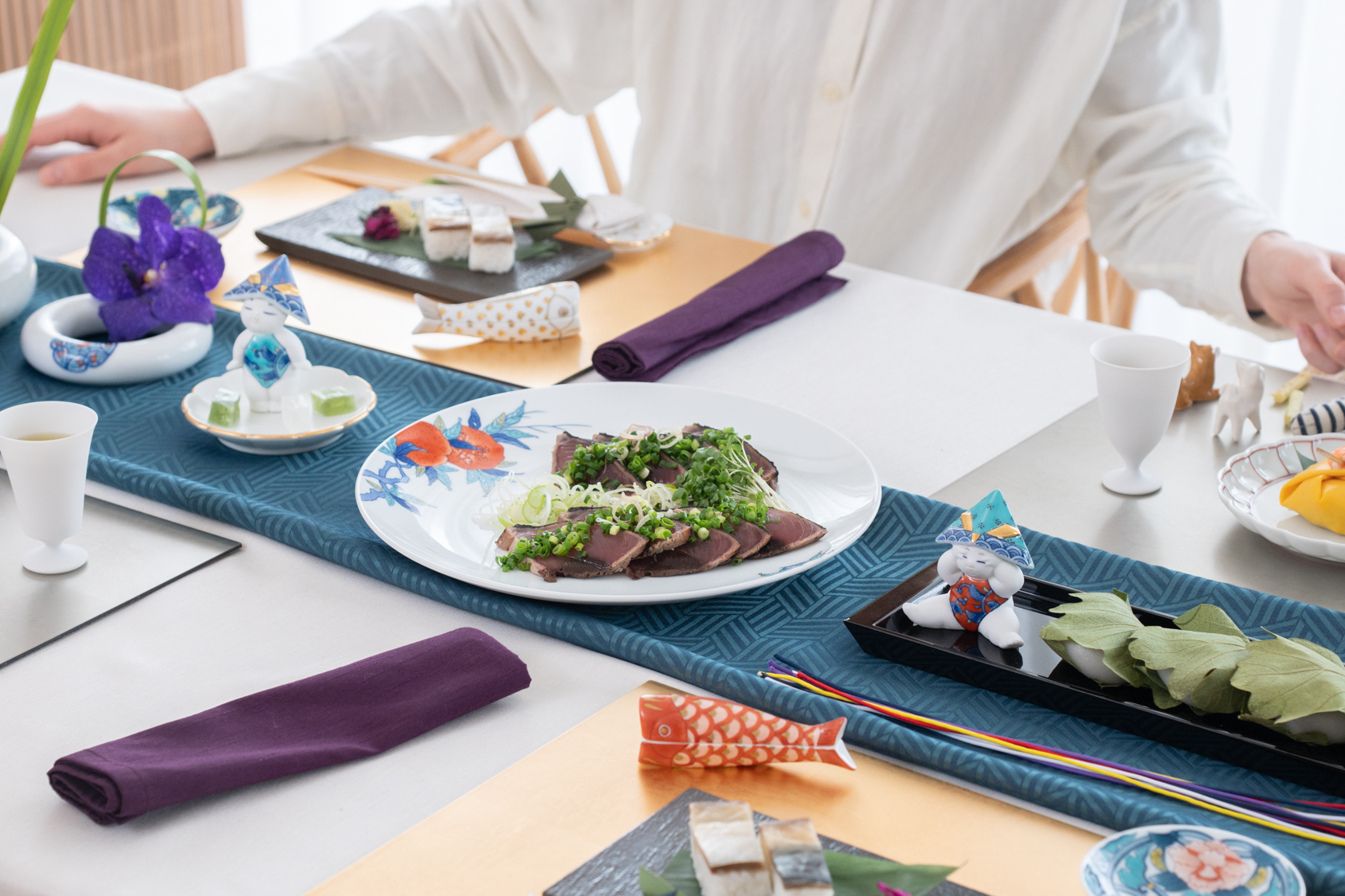
International Shipping
Multiple shipping options available, with discounted shipping for orders over 500000 and free shipping over 5000000.
Insured shipping service
Full compensation for any accidental damage that may occur during transit.
Made by Japanese craftsmen
Fair prices plus free furoshiki wrapping with every order.

